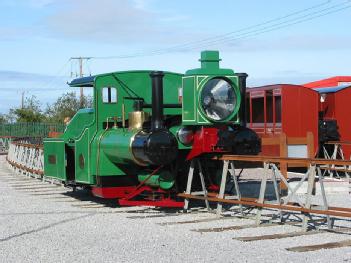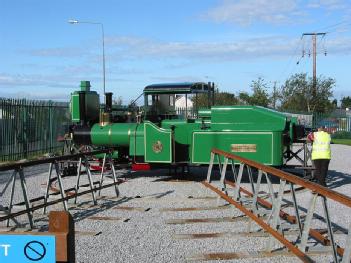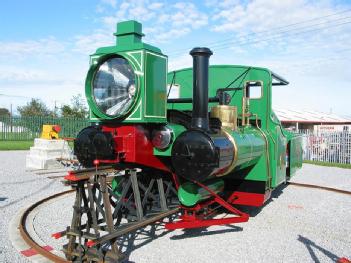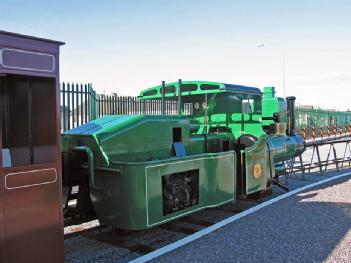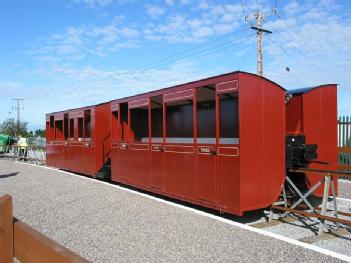| Description
|
From Wikipedia, the free encyclopedia:
The Lartigue Monorail system was developed by the French engineer Charles Lartigue (1834–1907).
The most famous Lartigue railway was the
The Listowel and Ballybunion Railway
This was a 14.4 km (8.9 mi) monorail built on the Lartigue principle in County Kerry in Ireland. It linked Listowel and Ballybunion, and opened on 29 February 1888.
The locomotives were of the 0-6-0 type (strictly speaking, 0-3-0), constructed by the Hunslet Engine Company. They were specially built with two boilers in order to balance on the track, and consequently two fireboxes, one of which had to be stoked by the driver. They were also fitted with powered tenders for auxiliary use on hills. The tender wheels were driven by two cylinders via spur gears. Two small chimneys were fitted to each tender to discharge the exhaust steam from these cylinders. A smaller engine nicknamed the "coffee pot" was said to have been used during the railway's construction, but there is no photographic evidence to support this.
Loads had to be evenly balanced. If a farmer wanted to send a cow to market, he would have to send two calves to balance it, which would travel back on opposite sides of the same freight wagon, thereby balancing each other.
Another problem with using the Lartigue system in populated areas was that, due to the track's design, it was not possible to build level crossings. In order for a road to cross the track, a kind of double-sided drawbridge had to be constructed, which required an attendant to operate it. Where farmers' tracks crossed the line there were level crossings based on the principle of a turntable. These were locked and the farmer in question provided with a key. Once unlocked the track could be swivelled to one side to allow the crossing to be used. Both the swivelling and drawbridge type crossings were automatically linked to signals which stopped any approaching trains; road traffic was always given priority under this system.
Passengers could not pass from one side of a carriage to another while in motion. A kind of footbridge was built into one end of some of the passenger coaches, while at least one such bridge was carried on a separate wagon. This allowed passengers to cross from one side of the line to the other when the train stopped at a station.
Conventional railway points could not be used, so a similar function was fulfilled by a large number of curved turntables. When rotated one way, the curve would connect the main and one direction. When turned end-for-end, the curve went in the opposite direction, and so connected the main and a different track.
The line closed in 1924 after the track was damaged during the Irish Civil War, and everything was scrapped except a short section of the track.
Restoration
In 2003 the Lartigue Monorailway Restoration Committee, a voluntary organisation from Listowel, opened a 1,000-metre (1,100 yd) section of Lartigue monorail on the trackbed of the former North Kerry line in Listowel. The line is worked by a diesel locomotive built to resemble the original 0-3-0 steam engines. The locomotive and its train of replica coaches were built by Alan Keef Ltd.
The Museum
The original GW&SR (later CIE) goods shed for the main Limerick-Tralee Line has been restored and converted into a museum and interpretative centre for the Lartigue Monorailway. It also acts as the entrance hall and ticket office. The museum contains memorabilia, including photographs, posters, tickets, signs, lamps and newspaper articles, relating to the Lartigue and main-line railway.
The museum also features an audio-visual room where visitors can view film footage of the original steam-powered Lartigue. Visitors can view scale-models of the original Lartigue train. |

 lartiguemonorail.com
lartiguemonorail.com 